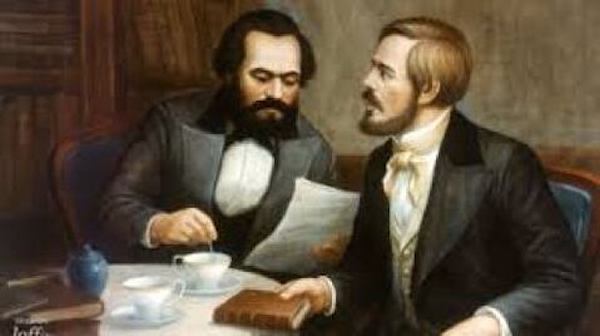The death of communism has been pronounced time and time again, but every day it is still fought against without respite or pity. There is no popular act or uprising which the bourgeoise does not see as a sign of communism, no nationalist or progressive opinion which is not branded as communist.
There is no doubt that since the publication of the Manifesto of the Communist Party in February of 1848 the bourgeoisie can no longer rest easy. The world has changed much since then, many references made that are since outdated, but its “general principles” remain valid, having been verified scientifically and confirmed by historical events.
The Communist Manifesto highlights the historical role of capitalism and how it has replaced relations based on patriarchy, the family, religion etc. with cold monetary interest, with “the icy water of egotistical calculation”. For the first time the trends of capitalism are laid out, from its birth in the European feudal system and its expansion all over the world, creating the global marketplace that we today call “globalisation”.
Marx and Engels foretold such a situation by stating, “The bourgeoisie has through its exploitation of the world-market given a cosmopolitan character to production and consumption in every country” (The Communist Manifesto, p.25). In the same way, they recognised that capitalism, “has made the country dependent on the towns…barbarian and semi-barbarian countries dependent on the civilised ones, nations of peasants on nations of bourgeois, the East on the West” (p.26), forming its imperialist stage. What’s more, they correctly pointed out that, “The bourgeoisie cannot exist without constantly revolutionising the instruments of production” insofar as they aid the creation of profits (p.24).
But the Communist Manifesto has highlighted not only economic trends, but also political, by pointing out that, “The executive of the modern State is but a committee for managing the common affairs of the whole bourgeoisie.” (p.23).
Without a doubt, there are many more contributions from the Communist Manifesto that we cannot stop to go over in this brief article, and so we will only touch on those that have been most attacked with the aim of removing its revolutionary edge.
The history of all hitherto existing history is the history of class struggles
Out of all the various social relations, relations of production are the main ones. Since the appearance of the social division of labour between manual and intellectual and the ownership of the social means of production, the division of men and women into two fundamental classes has emerged: the possessors of the means of production and the dispossessed. The group of people who took over the means of production dominate the dispossessed, making them work for their own enrichment.
For this reason, the Manifesto starts by saying that history “is the history of class struggles”. Masters and slaves, patricians and plebeians, lords and serfs, masters and tradesmen, that is to say exploiters and exploited, oppressors and oppressed have always clashed, sometimes subtly and other times frankly and openly.
Capitalism has not eliminated class contradictions; it has substituted the old classes for new ones; now everything revolves around the contradiction between capitalists and workers. Thousands of times it has been denied, and thousands of times it has been confirmed by reality. The bourgeoisie, unable to hide these contradictions, accepts them, but denies their origins as being in the possession or dispossession of the means of production, or in the position of people within the social relations of production.
For the capitalists, social classes are defined by their capacity for consumption, and these are the classes A, B, C, D and even E, within which class interests dissipate. This same criterion serves to sort the classes into upper, middle and lower, and since no one wants to damage their social prestige, a large number of proletarians feel flattered when they are placed in the middle class.
However, what the bourgeoisie cannot accept in any form, is the existence of class struggle. To accept it would be to recognise that in all aspects of society the interests of the class of big national and international capital take precedence, imposing themselves despotically on the relationships between capital and labour, on the free market that serves only to make a profit from the needs and lives of the people, on the State to guarantee their interests and impede the rights and demands of the exploited and oppressed.
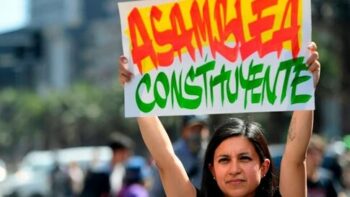 This situation of domination compels the exploited and oppressed classes to defend their rights, organising, mobilising, taking part in strikes etc. It cost the workers and the people of the 19th and 20th centuries great days of struggle for the legal recognition of their rights. For this reason, imperialist capital has counterattacked to shatter the workers’ organisations and defeat the Soviet Union and, having done this, has rolled out neoliberalism to take away democratic and workplace rights, neutralise the trade unions and the right to strike under the threat of being fired, etc. Thus, class struggle is exactly this bourgeois domination, and it exists even if the oppressed classes do not have the capacity to defend themselves and are not mobilising or going on strike.
This situation of domination compels the exploited and oppressed classes to defend their rights, organising, mobilising, taking part in strikes etc. It cost the workers and the people of the 19th and 20th centuries great days of struggle for the legal recognition of their rights. For this reason, imperialist capital has counterattacked to shatter the workers’ organisations and defeat the Soviet Union and, having done this, has rolled out neoliberalism to take away democratic and workplace rights, neutralise the trade unions and the right to strike under the threat of being fired, etc. Thus, class struggle is exactly this bourgeois domination, and it exists even if the oppressed classes do not have the capacity to defend themselves and are not mobilising or going on strike.
Class struggle is not a style nor a method of doing politics, as the Ecuadorian ex-president Rafael Correa so candidly declared in his time. Class struggle exists in social reality and is a consequence of the division of society into owners and non-owners of the means of production.
Capitalism has simplified class contradictions: bourgeoisie and proletarians
In the Communist Manifesto we read,
Our epoch, the epoch of the bourgeoisie, possesses, however, this distinctive feature: it has simplified the class antagonisms. Society as a whole is more and more splitting up into two great hostile camps, into two great classes directly facing each other: Bourgeoisie and Proletariat. (The Communist Manifesto, pp.21-22)
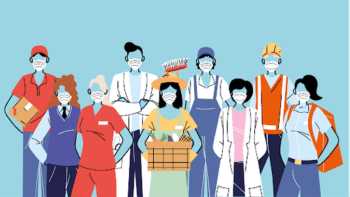 We arrive, therefore, at the most heavily criticised element of the Communist Manifesto and of the economic and social theory of Marxism. The working class, we are told, grows ever smaller.
We arrive, therefore, at the most heavily criticised element of the Communist Manifesto and of the economic and social theory of Marxism. The working class, we are told, grows ever smaller.
It results that the bourgeoisie, in order to judge the Communist Manifesto, use the categories of bourgeois “science”, which is why they speak a different language to that of Marx. In ‘Capital’, wage-earning workers are always the working class, because within capitalism the principal relationship of production is between capital and waged work, and never the relationship between capital and worker, or between capital and employee. For this reason, the working class encompasses all employees and not the simplistic workplace category that the bourgeoisie use in their factories.
Furthermore, Marx uses the word ‘worker’ in its full meaning, the worker is the person who has worked and produced ever since they appeared on the face of the earth. In this way, showing that human work is superior to that of animals, such as the spider or the bee, because before carrying out the work the worker first maps it out in his mind. Marx says:
At the end of every labour-process, we get a result that already existed in the imagination of the labourer at its commencement. He not only effects a change of form in the material on which he works, but he also realises a purpose of his own… (Capital Volume I, p.127)
To be a worker is to be a producer; it is innate in human beings and present throughout history. With a society divided into social classes, the workers are the ones who commit themselves to working so that others; the owners of the social means of production; may live and grow rich off their labour. Under capitalism, workers are proletarians as defined by Friedrich Engels:
By proletariat [is meant] the class of modern wage-labourers who, having no means of production of their own, are reduced to selling their labour-power in order to live. (The Communist Manifesto, p.21)
However, labour-power has been understood as if one were only speaking of physical force, ignoring the display of knowledge, experience, and intelligence on the part of the worker. Marx defines it with some clarity,
By labour-power or capacity for labour is to be understood the aggregate of those mental and physical capabilities existing in a human being, which he exercises whenever he produces a use-value of any description. (Capital Volume I, p.119).
We see, then, that labour-power and capacity for labour mean the same thing and include all the spiritual faculties present in the personality of the worker, such as free will, love or hate of work, emotions of anger and anguish, concentration, knowledge, intelligence, abilities, etc.
The capitalist buys these capacities for labour for them to carry out a collective work and produce the goods that he must sell on the market. This social work is a process in which different people, with different qualifications and skills, intervene.
In this regard, Marx tells us,
In a factory, the labourers do not directly take part in the processing of raw materials. The workers tasked with watching over those who work on these processing tasks are of a slightly higher category; engineers who work principally with their heads. Yet the result is the production of this ensemble of workers, who possess a labour power of distinct value […]. The type of capitalist production is characterised, in effect, by the act of separating and entrusting different people with various jobs, both intellectual and manual. This doesn’t prevent the product material from being the common product of all these people, nor that this common product is translated into material wealth, nor that each one of these people is, with respect to capital, a salaried worker, a productive worker in the highest sense of the word. All of these people, in addition to working directly in the production of material wealth, directly exchange their work for money considered as capital and therefore, in addition to their salary, directly reproduce a surplus value for the capitalist. (Teorías 1, p.224 translator’s version)
 All the capacities of the workers merge in this collective labour, capacities which are sold in exchange for a salary, and which provide a surplus value for the capitalist. The proletarian class is not just those who directly manufacture a product, but rather all those workers who take part in its production. The capitalists cannot do away with the working class, and so their foremost resolution is to divide it and with this same objective carry out labour outsourcing, through which workers who are indispensable to the production process are recategorized as tertiary and without any labour rights. (“El Capital” hoy, Chapter II)
All the capacities of the workers merge in this collective labour, capacities which are sold in exchange for a salary, and which provide a surplus value for the capitalist. The proletarian class is not just those who directly manufacture a product, but rather all those workers who take part in its production. The capitalists cannot do away with the working class, and so their foremost resolution is to divide it and with this same objective carry out labour outsourcing, through which workers who are indispensable to the production process are recategorized as tertiary and without any labour rights. (“El Capital” hoy, Chapter II)
This throws the bourgeois categorisation into disarray and shows that the working class maintains its power and its role within the capitalist system. However, there is still more to discuss: we have only spoken of the proletariat that has succeeded in selling its capacity for work, let us now see what happens to those who do not have such luck.
The tendency towards the proletarianization of capitalist society is unstoppable
In its advance over the world capitalism continually disintegrates or subordinates the past modes of production, uproots thousands upon thousands of peasants and artisans from their land and their means of production, creating a new social class: the proletariat. The proletarianization of the population of the population has always been greater than the capacity for employment of capital, generating a relative overpopulation which Marx called a “reserve army of labour” because it constituted a source of labour for the necessities of the expansion of capital and for maintaining low wages. Marx and Engels used the categories of working class and proletarian class interchangeably, because although a reserve army of labour was created, for proletarians who did not manage to sell their labour power, sooner or later they would do so, according to the empirical observations and the limits of the statistics from the time in which they lived.
In the 19th century and well into the 20th century this reserve army of labour became more stable in the developed capitalist countries of Europe, which one can attribute to a phenomenon exclusive to underdeveloped countries. This tendency towards the overgrowth of the reserve army of labour was undetectable in those times because there was a release valve of excess European proletarians as they emigrated to Australia and the New World, where they found better sources of work and better opportunities in land, displacing the indigenous populations, often through blood and fire, which was known as the North American “conquest of the west”. What’s more, the first and second world wars, aside from dividing up the world, also served capitalism by destroying part of the excess workforce.
Today, in the 21st century, the tendency towards the growth of proletarianization and the incapability of capitalism to provide employment has increased on the one hand and, on the other hand, there are no more indigenous populations with appealing lands to be displaced, or another world war to relieve the excess of the proletarian population. Under these circumstances we have millions of proletarianized people who cannot find a capitalist to whom they can sell their capacity for work, and this has produced a growth in freelance or gig workers and, to a lesser extent, in micro businesses, which represent some 93% of economic activities within the European Union (Círculo de Empresarios, p.81), mirroring underdeveloped countries.
 These proletarians, when they are unable to find work, find themselves forced to take refuge in a business of subsistence, because under capitalism everything is bought and sold, and no one can live without an income. They find themselves forced, through various means, to make some small amount of capital for themselves and start a business that is the easiest and most accessible to their poverty, especially petty commerce and services.
These proletarians, when they are unable to find work, find themselves forced to take refuge in a business of subsistence, because under capitalism everything is bought and sold, and no one can live without an income. They find themselves forced, through various means, to make some small amount of capital for themselves and start a business that is the easiest and most accessible to their poverty, especially petty commerce and services.This situation is taken by the epigones of capital to organise their statistics and argue for the reduction of the proletariat because a large portion of the economically active population are dedicated to tertiary jobs. They deliberately hide that nearly the entirety of this sector are independent contractors who have no capacity for contracting labourers, are fundamentally self-employed, and their economy is a subsistence one with no capacity for accumulating capital. This reality makes them semi-proletarians, and all the political aid programmes do nothing for them because these are for the petty bourgeoisie; they don’t realise that they have their own interests which are very different from any other bourgeois splinter. (“El Capital” hoy, chapter 9)
Salaried workers and the semi-proletariat make up more than 80% of the economically active population in capitalist countries, which confirms the tendency highlighted in the Communist Manifesto that. “Society as a whole is more and more splitting up into two great hostile camps, into two great classes directly facing each other: Bourgeoisie and Proletariat.” (p.22)
Capitalism can no longer control the powers of the nether world that it has created
Capitalism, seeking the greatest profits, has taken over the world and developed never before seen technological powers, with a sufficient productive capacity to solve world hunger. However, it does not do this because it is not prepared to give up the products it has available if it is not paid the price it demands.
Its eagerness for profit leads it to produce to earn more and more, in a race of producing capital for the sake of producing, until there is an excess of goods in relation to the buying capacity of the population. In this bottleneck financial capital gives out quick and easy loans, not just for production, but also for consumption, creating a fictitious demand and postponing crises.
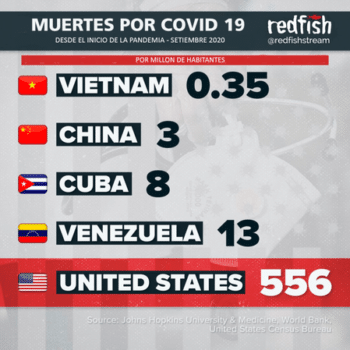 In this race economic bubbles grow until they pop, such as in the 2007-2008 crisis, from which capitalism has never recovered; a great relapse was announced in 2020 when the pandemic arrived. The only thing that COVID-19 has done is deepen the crisis to unforeseen levels.
In this race economic bubbles grow until they pop, such as in the 2007-2008 crisis, from which capitalism has never recovered; a great relapse was announced in 2020 when the pandemic arrived. The only thing that COVID-19 has done is deepen the crisis to unforeseen levels.
There is a great certainty when the Communist Manifesto says, “Modern bourgeois society with its relations of production, of exchange and of property, a society that has conjured up such gigantic means of production and of exchange, is like the sorcerer, who is no longer able to control the powers of the nether world whom he has called up by his spells.” (p.28)
The crisis that the world is living through has completely unmasked capitalism. By prioritising businesses and capitalist speculation not one developed capitalist country has been able to tackle the health crisis; compared to China, Cuba, Vietnam, even Venezuela, they are an absolute embarrassment.
Knowing their sanitary shortcomings for handing over health to the voracity of private profit, capitalist countries have had the necessary resources to counteract the epidemic, which has resulted in 2.5 million deaths from COVID-19 in just one year (Google news), which must be doubled if one considers all the deaths due to distraction from other illnesses.1
It would seem that the bourgeoisie is taking advantage of the situation to do away with the excess of proletarians to whom it could never give employment; it is horrifying to learn that in Madrid and New York they have intentionally stopped checking in on retirement homes.
What has happened to the gravediggers of capitalism?
The economic and political situation of the world today seems to clash with what Marx and Engels said of the proletariat in 1847, “But not only has the bourgeoisie forged the weapons that bring death to itself; it has also called into existence the men who are to wield those weapons–the modern working class–the proletarians.” (Communist Manifesto, p.29)
The suffering of the proletariat from the 2008 crisis and the global crisis that we are currently living through is tremendous. Even before the pandemic, the cutback and annulling of labour rights were unstoppable; millions of workers lost their jobs, their savings, and their houses in developed countries.
Such was the suffering that between 2007 and 2017 in Spain some 17,000 people took their own lives for economic reasons (HISPANTV). Add onto that the millions of deaths due to COVID-19 in the last year, the millions of workers who have lost their jobs and salaries, the millions of independent contractors who have lost their precarious businesses etc.
The responses of the workers are lacking in focus. Some have had global impact, such as the mobilisations in the United States, France, India, Belgium, and Spain among the more well known. Only the mobilisations of the Chilean people have had a political focus against neoliberalism. But not one of these examples questions the capitalist system.
This situation of the global proletariat is not down to the Communist Manifesto being wrong. After its publication the global proletariat carried out historic struggles which have changed the course of history in previous centuries.
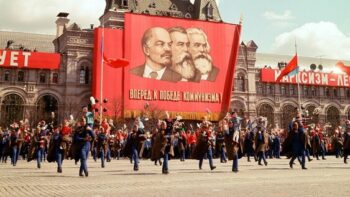 The 1872 Paris Commune was followed by the great 1917 proletarian revolution in Russia, which started the first attempt to build an alternative society to capitalism in the world, taking this immense country from underdevelopment to becoming the second greatest world power, capable of defeating Hitler’s powerful Nazi army. From then would come the revolutions in China, Korea, Cuba, Vietnam etc and an ample national liberation movement in Africa, Asia, and the Middle East.
The 1872 Paris Commune was followed by the great 1917 proletarian revolution in Russia, which started the first attempt to build an alternative society to capitalism in the world, taking this immense country from underdevelopment to becoming the second greatest world power, capable of defeating Hitler’s powerful Nazi army. From then would come the revolutions in China, Korea, Cuba, Vietnam etc and an ample national liberation movement in Africa, Asia, and the Middle East.
It would come to pass that the imperialist bourgeoisie also learned and carried out a counterattack on various fronts:
- Overthrow the Soviet Union by hounding it with the “Cold War” and a global ideological smear campaign as an alternative to capitalism.
- Domesticate the heads of union organisations, integrating them into the bourgeois system.
- Assimilate the workers’ parties so that they take on political positions to integrate into the system and renounce revolutionary Marxism and
- An ideological campaign, never seen in history, using all the means of communication, television, radio, cinema, schools, universities, churches, etc. to convince everyone that there exists only one social alternative: capitalism.
With the union and political organisations domesticated and the Soviet Union overthrown, all the banners of neoliberalism were unfurled, coming to cut yet more labour and union rights, but above all to impose work flexibility, giving legal capacities to the bourgeoisie to fire any who tried to organise unions. For these reasons, for example, in Peru only 5% of workers are in a union.
This situation explains why the proletariat cannot organise a meaningful response to the aggressions they receive from the bourgeoisie and why, lacking an ideology and revolutionary parties, they do not carry out their struggles to end this economic, social, and political system which threatens not just workers, but all of human civilisation.
It is time then to learn the lessons of history, overcome this disorganisation, end the relaxation of work laws, etc. Above all, to organise ourselves into a revolutionary party as the Communist Manifesto demands and carry out a wide-ranging political and ideological struggle for the historical interests of the proletariat of Peru and the world, in an independent manner, banishing the copycat attitudes of bourgeois governments and politicians.
Toby Green is a languages undergraduate based in the United Kingdom. His engagement with revolutionary politics started during a module on the Russian revolution in A-level history. It has been growing ever since with exposure to Marxist, anarchist, feminist and communalist theory, as well as experiencing the world of work under capitalism in all its dull horror.
Notes:
↩ At the time of translation (December 2021) this figure has increased to 5.3 million deaths
Bibliography
- Alarcón, C. “El Capital” hoy: Capitalismo y crisis en el S. XXI
Círculo de Empresarios (2018). ‘La empresa mediana española’. Available at: circulodeempresarios.org (Accessed: 22/12/2021). - Google News. ‘Coronavirus (COVID-19)’. Available at: news.google.com/covid19/map?hl=es-419&gl=PE&ceid=PE%3Aes-419
- HISPANTV (2018). ’17 mil españoles se suicidan desde 2007 por causas económicas’. Available at: www.hispantv.com (Accessed: 22/12/2021).
- Marx, K. and Engels, F. (2015). Capital: A Critique of Political Economy: Volume I. Available at: www.marxists.org (Accessed: 08/12/2021). (First published in 1867).
- Marx, K. and Engels, F. (2004). The Communist Manifesto in The Communist Manifesto & Selected Writings. Pan Macmillan: London. (First published in 1848).

